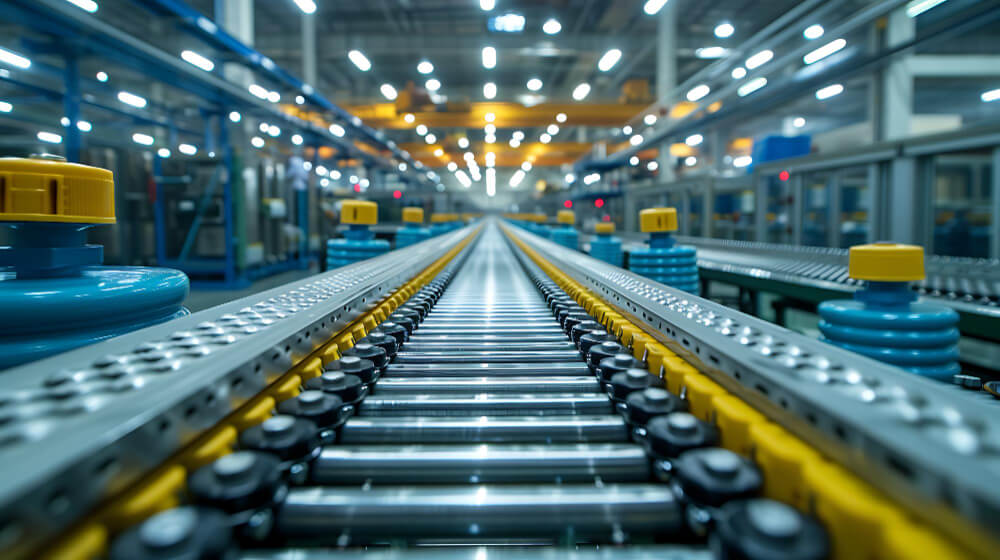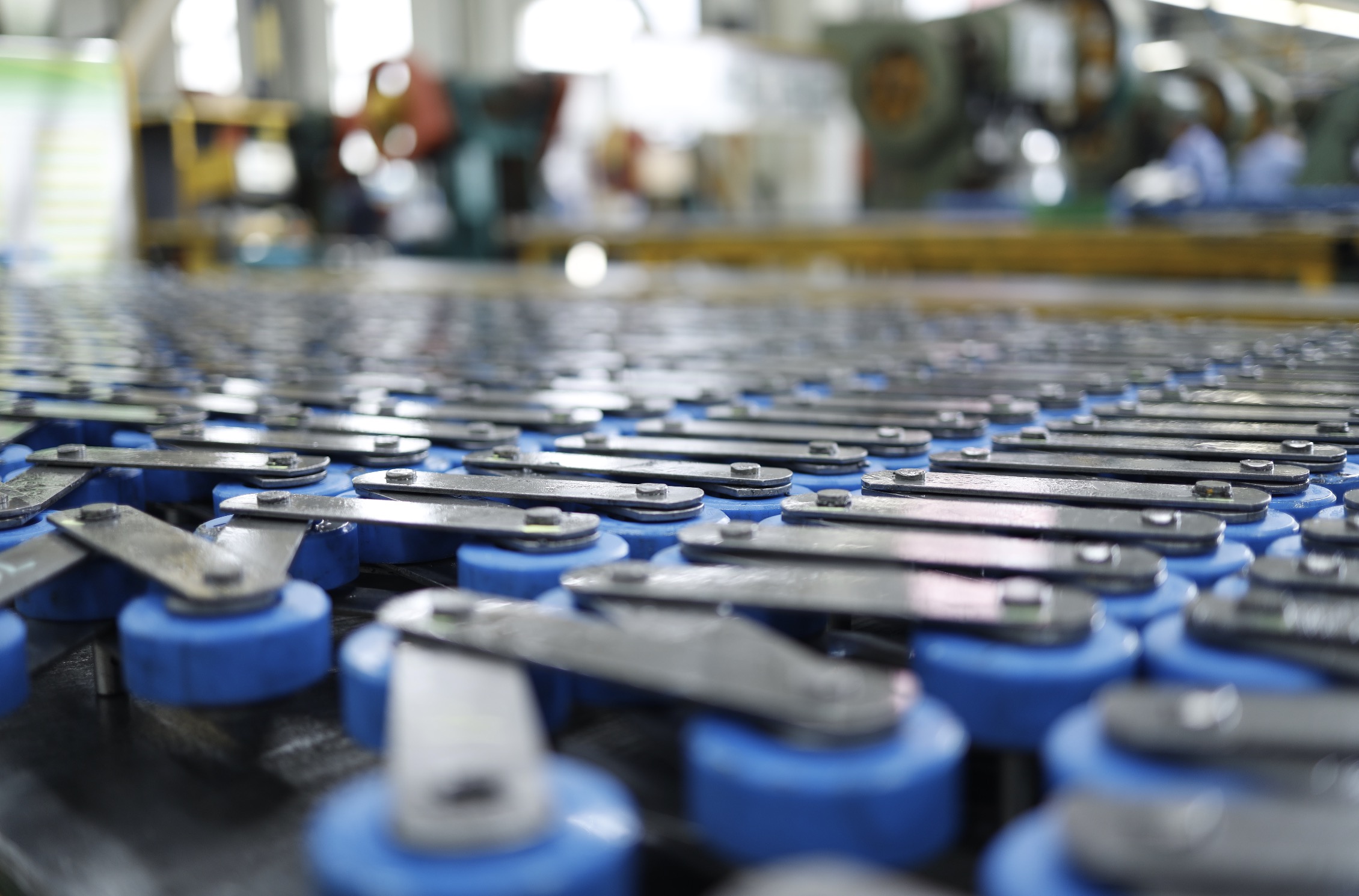A drive chain is a type of mechanical device that enables a vehicle to move. It is a transmission device that transfers power through a long loop.
A drive chain consists of a series of rigid links. These links have pin joints, which give them the flexibility to wrap around the wheels. The chain is fitted into sprocket wheels, and as the chain moves, so does the wheel.
A chain is an oval-shaped mechanism that transmits mechanical power. It is mostly used to transfer mechanical power from one distance to another. It is the driving force behind motorcycles and bicycles. If you want to know how drive chains work, continue reading this article.
What Is A Drive Chain?
A Drive chain is also known as a roller chain or transmission chain. This simple chain is often used to convey power to motorcycles and move the wheels.
Drive chains are oval loops that are used to move heavy objects from one place to another. These chains are usually made of multiple links with more than one gear and can go around a corner.
Among the many advantages of drive chains, they are inexpensive, easy to manufacture and maintain, and can be changed when needed. This is why they are an increasingly popular choice for mechanical drives.
The best part of a drive chain is its ability to transmit power. If properly maintained, it will last for years. And that’s why they are extremely popular in various industries.
Components of a Drive Chain
Drive chains are integral to numerous mechanical systems, transferring power efficiently from one point to another. The key components of a drive chain include:
Links
The links are the basic building blocks of a drive chain, interconnecting to form a continuous loop. Each link typically consists of two outer plates and two inner plates, connected by pins. The links provide the chain’s overall length and flexibility, enabling it to wrap around sprockets.
Rollers
Positioned between the inner plates, rollers reduce friction as the chain engages with sprocket teeth. They rotate around the pins, allowing smooth movement and minimizing wear on both the chain and sprockets.
Pins
Pins are the connecting elements that hold the links together. They pass through the holes in the inner and outer plates and provide the pivot points for the links, allowing the chain to bend and flex as it moves around the sprockets.
Bushings
Bushings are cylindrical components fitted between the pins and rollers. They act as bearings, reducing friction and wear between the moving parts of the chain. In some chains, bushings are integral to the inner plates.
Sprockets
Sprockets are toothed wheels that engage with the chain, driving it forward or pulling it along. The size and number of teeth on the sprockets determine the speed and torque of the drive system.
How Does a Drive Chain Work?
Drive chains are used in the transmission of motion from a power source to a driven wheel. These devices are usually made from rigid links with pin joints that allow them to wrap around a wheel without deforming or twisting.
The sprocket is the driving wheel that fits onto a shaft. It is held in place by a key, and a chain connects the two sprockets. It transfers power and speed. Some common applications of drive chains include bicycles, motorcycles, rollers, rolling mills, and road rollers.
The standard series of roller chains are the most common drive chain. Its power rating capacity covers a wide range of drive load requirements. Multiple-strand roller chains offer increased power capacity without increasing the chain pitch or linear speed. Another type of drive chain is the silent or inverted tooth chain. This type of drive is made of multiple toothed link plates and has flexibly independent of each pitch.
A drive chain may have more than one gear. This increases its power capacity. They are often a simple oval loop and contain more than one gear. The second gear recovers power from the shaft or hub. It is often called a double-strand chain. The third gear is called a dual-strand chain, and it is a multi-strand drive chain.
In a drive chain, the chain conveys the power. The chain passes over a sprocket gear which transfers the power and causes the wheels to move. The sprockets have teeth that fit in the holes in the chain links. Now, as the gear is turned, it pulls the chain, thereby putting force into the system. This is how chain drive works.
Applications of Drive Chains
Industrial Use
Drive chains are widely used in industrial applications due to their strength, durability, and reliability.
In manufacturing plants, conveyor systems rely on drive chains to move products through various stages of production.
These chains handle heavy loads and provide consistent performance, ensuring efficient operations.
In the mining and quarrying industries, drive chains are used in equipment such as draglines, loaders, and conveyors.
They are designed to withstand extreme conditions and heavy loads, making them ideal for these demanding environments.
Additionally, drive chains are essential in material handling systems, such as warehouse conveyors, where they transport goods and materials over long distances.
Drive chains are also crucial in the food and beverage industry, where they power processing and packaging machinery.
Stainless steel and plastic chains are commonly used in these applications to meet hygiene standards and resist corrosion from frequent cleaning.
Automotive Use
In the automotive sector, drive chains play a vital role in various vehicle systems.
Timing chains synchronize the rotation of the crankshaft and camshaft in internal combustion engines, ensuring precise valve operation and optimal engine performance.
These chains are preferred over belts in many applications due to their durability and long service life.
Motorcycles and bicycles use drive chains to transfer power from the engine or pedals to the wheels.
These chains handle high speeds and varying loads, providing reliable and efficient power transmission.
FAQs about Drive Chain
Is a roller chain the same as a drive chain?
No, a roller chain is a type of drive chain characterized by the presence of rollers between the links. While all roller chains are drive chains, not all drive chains are roller chains. Drive chains can also include types like silent chains and leaf chains.
When should drive chain be replaced?
Drive chains should be replaced when they show signs of significant wear, such as elongation, stiff links, or excessive noise. Regular inspections and maintenance are essential to identify these signs early. Typically, manufacturers provide specific replacement intervals based on usage and conditions.
How long do drive chains last?
The lifespan of a drive chain depends on various factors, including the type of chain, operating conditions, and maintenance practices. On average, a well-maintained drive chain can last between 15,000 to 20,000 miles for automotive applications and several years in industrial settings. Regular lubrication and proper tensioning extend chain life.



